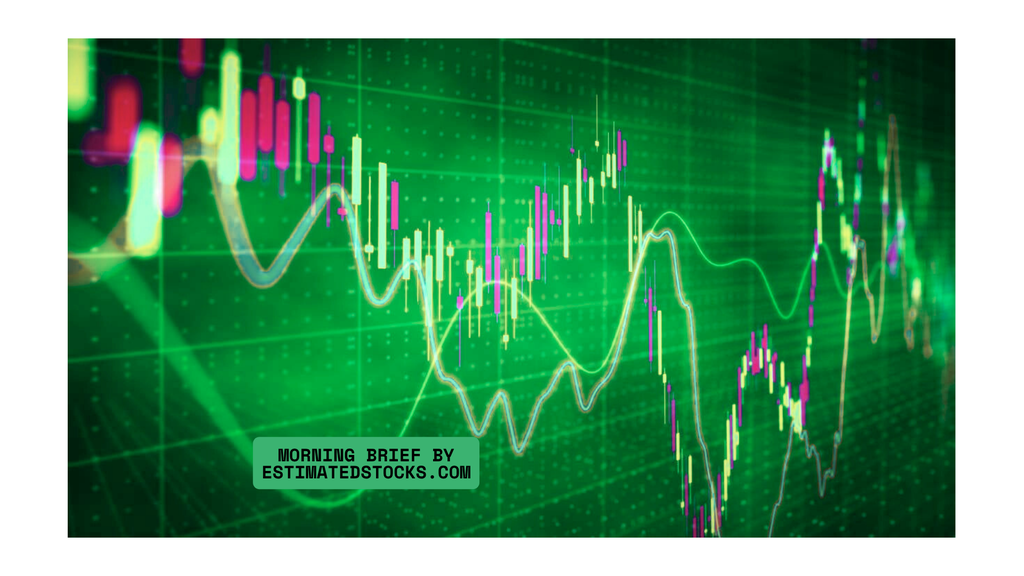
US economy faces stagflation risks with weak investment, rising inflation, and labor market softening. Explore macro trends, sector insights, and investment tips.
US Economic Outlook: Stagflation Signals Strengthen in Q1 2025
Introduction: The Stagflation Twister Continues
Today's economic data reinforces the unsettling scent of stagflation, as the US economy wrestles with stagnation on one side and inflationary pressures on the other. The latest figures depict a mix of weak investment, sluggish labor conditions, and persistent price pressures—an uncomfortable cocktail that complicates the Federal Reserve’s policy decisions. Let’s break it down.
Macro Trends Breakdown
The Good 🌟: Pockets of Strength in GDP and Consumer Spending
- GDP Growth Rate (Q4, 2nd estimate): Revised down to 2.3% (from 3.1%), but still in expansion territory.
- Durable Goods Orders (MoM, Jan): 3.1% growth, exceeding expectations (2%). A sign of resilience in manufacturing.
- Real Consumer Spending (QoQ, Q4): Accelerated to 4.2%, indicating consumer demand remains strong despite economic uncertainties.
- Mortgage Rates Declining: 30-year mortgage rates fell to 6.76% from 6.85%, offering slight relief for potential homebuyers.
The Bad 💩: Labor Market and Housing Slump
- Initial Jobless Claims: Jumped to 242K, surpassing consensus (221K). The labor market could be softening.
- Pending Home Sales (MoM, Jan): Plunged -4.6%, marking the lowest level on record.
- Kansas Fed Manufacturing Index: Deepened to -13, indicating contraction in regional manufacturing activity.
- Nonresidential Investment (Q4, revised): Worsened from -2.2% to -3.3%, a troubling sign for business confidence.
The Ugly 🤯: Inflation Heating Up Again
- Core PCE Prices (QoQ, Q4): Revised up to 2.7% (from 2.5%), signaling persistent inflation in services.
- PCE Prices (QoQ, Q4): Rose 2.4%, up from 1.5% previously—suggesting price pressures are broader than expected.
- GDP Price Index (QoQ, Q4): Increased to 2.4%, indicating rising input costs across the economy.
Micro Trends & Sectoral Impacts
Sectors Poised to Outperform 💪
- Consumer Discretionary & Retail: Robust consumer spending (4.2%) suggests strength in retail and travel-related industries.
- Defense & Aerospace: Durable Goods Orders ex-Defense surged 3.5%, indicating strong demand for commercial aircraft and industrial equipment.
- Technology & AI: With businesses hesitant to invest in traditional infrastructure (-3.3%), capital could shift toward automation and AI-driven efficiencies.
Sectors at Risk ⚡
- Real Estate: Weak home sales (-4.6% MoM, -5.2% YoY) and declining nonresidential investment suggest ongoing pain.
- Manufacturing: Weak Kansas Fed Manufacturing Index (-13) and flat Durable Goods Orders Ex-Transportation (0%) show the sector struggling amid higher costs and weak demand.
- Financials: With uncertainty around Fed policy and slowing business investment, lending activity may decelerate.
Biggest Risks Ahead ⚠️
- Fed Policy Dilemma: With inflation reaccelerating but growth slowing, the Fed may struggle to justify rate cuts, potentially keeping borrowing costs elevated.
- Labor Market Weakness: Rising jobless claims and slowing business investment could translate into weaker job creation in the coming months.
- Global Uncertainty: China’s slow recovery and geopolitical tensions remain external risks to US economic stability.
- Housing Market Stagnation: A prolonged slump in housing could spill over into consumer wealth effects and broader economic activity.
Final Take: Investment Strategy Recommendations 💡
- Defensive Positioning: Given stagflation risks, consider increasing exposure to consumer staples, healthcare, and utilities—sectors that tend to perform well in volatile conditions.
- Opportunistic Plays: Select tech and AI-driven stocks as businesses shift investment into automation rather than traditional infrastructure.
- Avoid Overexposure to Housing & Financials: Real estate remains under pressure, and financials face uncertainties tied to Fed policy.
- Fixed Income Appeal: If economic slowdown concerns persist, long-duration bonds may gain favor as rate cut expectations return later in the year.
Conclusion: The Twister Continues
With one foot in stagnation and another in inflation, the US economy is navigating a tricky economic Twister game. The Fed faces a delicate balancing act, and investors must stay nimble. Stay diversified, hedge against inflation, and keep an eye on labor market signals—they may be the first indicator of what’s next. 🎢
Disclaimer:
The information provided in this article is for educational purposes only and should not be construed as investment advice. estima...
Author
Shaik K is an expert in financial markets, a seasoned trader, and investor with over two decades of experience. As the CEO of a leading fintech company, he has a proven track record in financial products research and developing technology-driven solutions. His extensive knowledge of market dynamics and innovative strategies positions him at the forefront of the fintech industry, driving growth and innovation in financial services.


